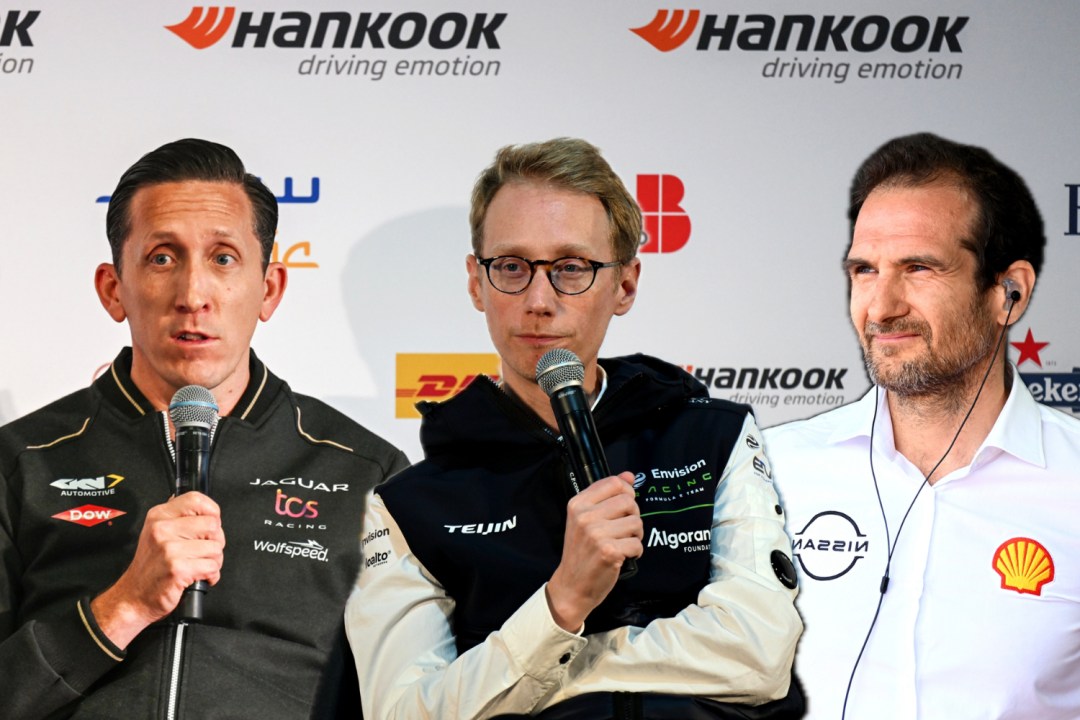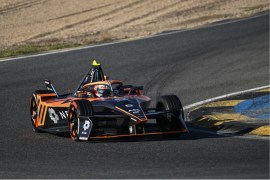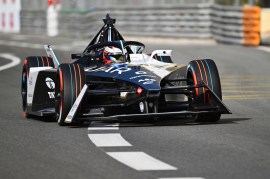How Formula E racing tech will give your electric car a longer range
We talk about the work that goes into making a Formula E race happen, the cars on the track, and the future of motorsports

Formula One is one of the most popular motorsports events, regarded by many as the pinnacle. But there’s a new motorsport event in town, built for the evolution of electric vehicles – Formula E. It’s an exciting motorsports event. Last year, it had 116 overtakes on the racetrack compared to F1, which had around 40. The newest car is now 30% faster than an F1 car, going from 0-60mph in just 1.82 seconds. Not only is it an electric and sustainable race, it’s also impressive as well.
And a large part of this comes down to the development of the cars. Unlike Formula One, Formula E teams all race the same car. The only bit they get to develop is the electric powertrain. That means teams have to be leaner, and look to more efficient ways of making their vehicles better. To find out more about the races and what goes on behind the scenes, we caught up with some of the teams behind Formula E.
We spoke to Alejandro Agag, the CEO of the entire race; James Barclay, the Team Principal for Jaguar Racing; Tommaso Volpe, the Team Principal for the Nissan Formula E Team; and Sylvain Filippi, the Team Principal for Envision Racing. They gave us some insights to the work that goes on behind the scenes of Formula E.
Formula E is designed around the electric powertrain
The technology roadmap of Formula E is designed around the development of the electric powertrain. That’s all the parts that make the car move, basically. The chassis and the bodywork of all the cars are identical. The battery is also a common part. Which is why we rely on on the electric powertrain.
From the battery onwards you get, an inverter. The inverter converts the current from a DC direct current to an AC alternative current. So the inverter takes the energy from the battery to the electric motor, and then the electric motor goes to a gearbox, and then the rear suspension, driveshaft, wheel, and so on.
Basically Formula E is a is an efficiency race. The power is capped at the same amount for all the cars. So the maximum power in Formula E is 350kW, and that’s the same for everyone. But the difference in the powertrains comes down to power density. So if a powertrain is 1% more efficient than another, you end up going 1% faster. So instead of being a horsepower race, it’s an efficiency race. Whoever has the lightest powertrain can also have better vehicle dynamics. And that’s why working on the powertrain is so essential. [Sylvain Filippi]
Software is essential, we can make the cars more efficient
We designed over a thousand parts for our car. The cars as you know look the same, but underneath, they’re very different: the powertrain, the electric motor, the inverter, the gearbox, all the suspension systems. It’s really important that all the software side is all done by us, which is also very relevant in our road cars. We want to understand the technology better than our competitors. Why? Because it allows you to differentiate, allows you to find more efficiency, more performance or driver enjoyment. Once we design our hardware, we have to race it for two years. But the software we can update between races. So every race we go into a huge amount of work to update the software in our cars and to basically make them perform better. [James Barclay]
There are two key areas where we can learn a lot. One is how to design the hardware to make it as efficient as possible, for example, the matter of designing material. And the other one is the energy management. All the tools that we use to manage the vehicle efficiency and the energy during the race are software tools. These two areas are very important for normal electric vehicles. [Tommaso Volpe]
Software plays an absolutely huge part in Formula E, because the cars are electric and the hardware of the car is frozen every year. Once we start racing in January with the car, we are not allowed to improve or change parts and design new parts during that season. But the software is free for us to develop – we can design new software every time. Software controls the energy going from the inverter to the motor, and lets us make the car super efficient. We also use software and controls to actually help with the vehicle dynamics of the car. Because the the frequency of an electric motor is so much higher than the combustion engine, you can be so much more precise with how you control an electric motor. That means you can do all sorts of things to help the performance of the car, not just the straight end speed. Then, of course, races in Formula E are all about energy management. If I give you the track layout and then I give you a resistance of 30 laps, we have to figure out what is the most efficient to go from the start to the finish with a given amount of energy. That’s a very pure mathematical problem to solve, which we can pre-programme into the car to make it as efficient as possible. [Sylvain Filippi]
And then we can transfer this to our road cars
Software is absolutely relevant to future road cars. A bit like a smartphone, we can update the software through over-the-air updates, and then the cars perform better. We’ve seen this in the past. We’ve produced a 20-kilometer range increase in the Jaguar I-Pace through our learnings in electric racing. [James Barclay]
With software, you can transfer experience on how you design the gearbox and the motor in order to maximise efficiency. It’s important to not that you exchange these learnings, not the parts, obviously. [Tommaso Volpe]
The purpose of Formula E is to develop these amazing electric powertrains that will make their way to road cars. The reason we focus all our energy and resources on the powertrain is because this is the technology that can make its way to road cars. It’s pretty easy to make a race car go faster by adding downforce, but that doesn’t help road cars whatsoever. If anything, you’re trying to do the opposite on road cars. Where we’re trying to make a very lightweight, high power, high efficiency powertrain, it means road cars that are lighter as well. That’s obviously better for vehicle dynamics and efficiency, but also to make you go faster or get longer range. Additionally, the higher the voltage, the more efficient your powertrain is, and the more power you can generate. As a side bonus, the faster you can charge as well. So super-fast charging for the future, is enabled by high voltage systems. We started creating these about 8 years ago, and now the latest electric cars, like the Porsche Taycan, are all being built on 800 volt architecture. [Sylvain Filippi]
Formula E and Formula One will coexist, but electrification is the future
Going from where we were to where we are is a huge leap. I’m super pleased to be here, with a championship that works and that has a great evolution – a lot more than I expected in the beginning. Our Gen 4 car is one more step, and it’s great to see every step forward, because we keep progressing with giant leaps. It’s not a leap of 1%. It’s a leap of 20% or 30% every time. [Alejandro Agag] With Gen 4, the intention is to move towards a car which has permanent four-wheel drive, and up to around 600kW of power. Compare that to where we are now with 350kW of power. You think these cars are already qualifying are very fast? When you almost double the power, things are going to get very exciting. [James Barclay]
I think racing is going to represent basically what happens in mobility, and electric will be the main way of mobility. I think also improving combustion, optimising emissions, hydrogen, and other technologies will play a role in the future, but I think electric will be the main one. [Alejandro Agag]
I definitely think that Formula One and Formula E will coexist. F1 has lots to talk about when it comes to sustainable fuels. While the reality is that might be for a relatively small percentage of volume of cars sold, I think it still has an applicability. But I think for the majority of people and audiences, full-EV is likely the most relevant. Formula E might bring that relevance to most consumers, with F1 being a bit more niche to some degree. [James Barclay]
Electrification is step by step going into all motorsports. It will take a much more important role compared to current regulations. The percentage of power output coming from the combustion engine in the future in F1 will probably be the same. This is a technological transformation. But in a way, it serves a much bigger picture, which is transforming mobility into something sustainable. The big picture for Nissan is to use electrification to deliver excitement to our drivers, but also as a step to make sure that our vehicles are more sustainable. And in fact, we plan to be carbon-neutral by 2050. [Tommaso Volpe]


